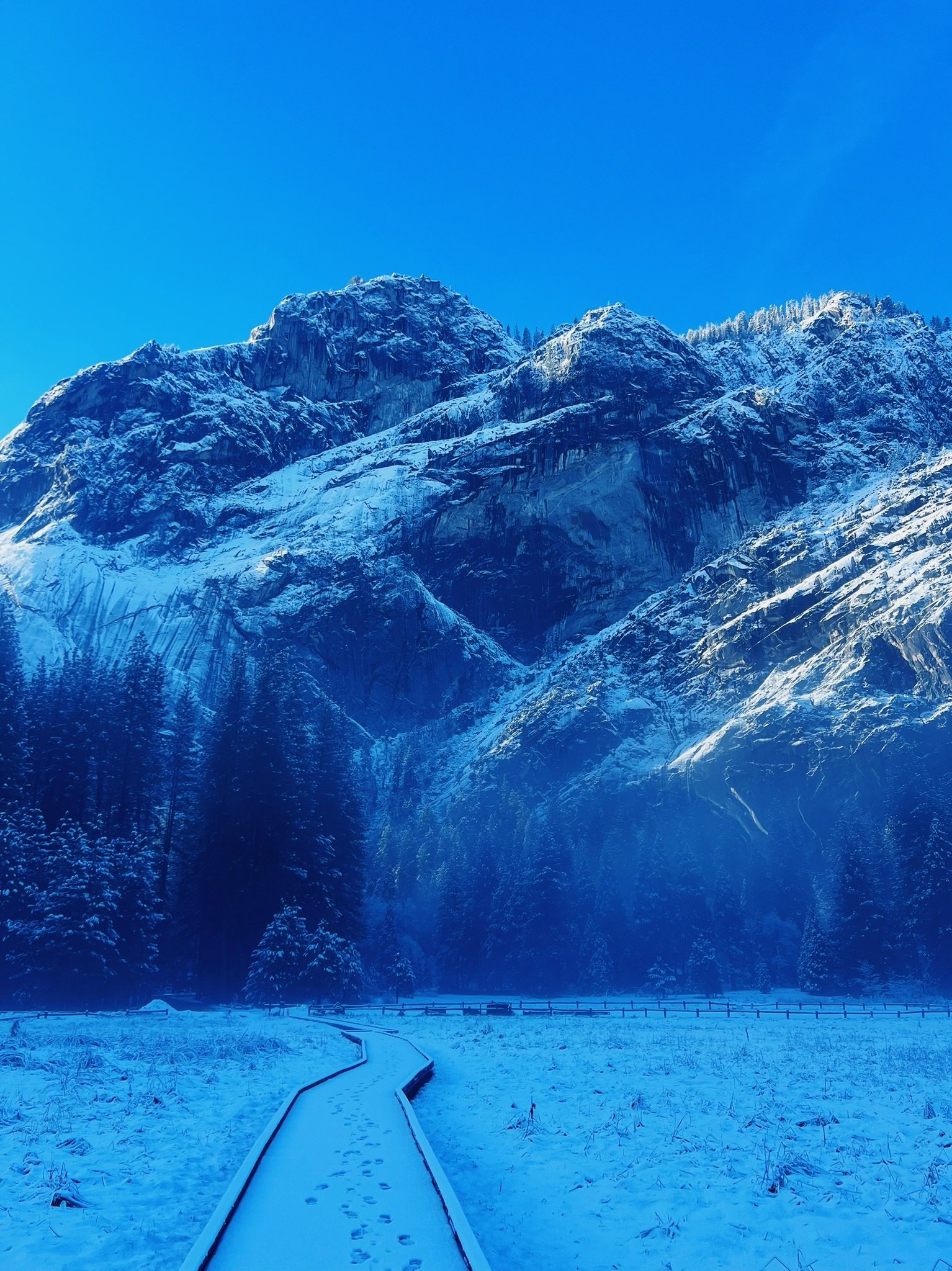A Guide to Winter Camping: Equipment Essentials
Winter in Yosemite National Park
Immerse in the serenity of a winter wonderland and experience the thrill of the cold season with winter camping. But, it's not a walk in the park. Winter camping requires special preparations and gear to endure the frigid temperatures, snowy landscapes, and unpredictable weather. This comprehensive guide will walk you through the essentials, from setting up camp in the snow, managing your food and drink, to dressing appropriately for the cold.
Setting Up Camp in the Snow
When winter camping, the likelihood of setting up camp on snow is high. Selecting the right spot for your tent is crucial for your comfort and safety.
Spot Selection
Always choose a spot that provides protection from wind and is free from avalanche risk. Look for areas with less vegetation and make sure you're neither on nor beneath a slope that could possibly slide. Your campsite should be at least 200 feet away from trails, water sources, and other campers for privacy and reducing impact on the environment.
Tent Setup on Snow
Tents for winter camping should be sturdy, able to withstand powerful gusts of wind, and heavy snow loads. Before setting up your tent, pack down the snow in your selected area to prevent body heat from melting the loose snow underneath, which can make sleeping uncomfortable. You can do this with your snowshoes, skis, or simply stomping around in your boots.
Consider using snow stakes instead of standard tent stakes for better stability. And remember, keep any sharp item that could potentially tear your tent well away from your shelter.
Crafting Your Winter Kitchen
One of the joys of winter camping is the ability to create your customized kitchen. You can dig out and shape the snow to make a cooking surface, seats, tables, or even a storage cabinet.
Leave No Trace (LNT)
Winter camping also calls for adherence to the Leave No Trace camping ethics. Always stay on deep snow cover when possible, camp away from trails, water sources, and other campers, and pack out human waste and toilet paper in a plastic bag.
Food and Drink Considerations for Winter Camping
Maintaining proper nutrition and hydration during winter camping is crucial to stay warm and energetic. Proper nutrition involves hot and simple meals, taking short lunch breaks for quick-grab snacks, and securely storing food to keep it away from animals. Hydration, on the other hand, should be consistent throughout the day, even if you might not feel particularly thirsty due to the cold weather.
To obtain drinking water during winter, melting snow is a common practice. However, this requires extra fuel, so make sure you pack adequate amounts.
Mount Rainier
Essential Winter Camping Gear
The key to successful winter camping is to stay dry and warm. Here are the key items you need:
Tent
A robust tent that can handle winter weather is a must-have. Tents for winter camping have sturdier poles and heavier fabrics than 3-season tents. They are designed to withstand powerful gusts of wind and heavy snow loads. They also have less mesh and the rainflys extend close to the ground to keep swirling snow from getting inside.
Backpack
Winter camping requires additional gear and warmer, bulkier clothing. Therefore, you might need a larger backpack than you typically use in the summertime.
Sleeping Bag and Pad
Winter camping calls for a sleeping bag that can provide ample warmth during freezing nights. It's advisable to use a bag that's rated at least 10°F lower than the coldest temperature you expect to face. Along with a warm sleeping bag, investing in two full-length sleeping pads can provide excellent insulation from the cold ground.
Stove
Having a reliable stove for winter camping is essential. Liquid-fuel stoves and some canister stoves are good options for winter camping. These are capable of functioning in below-freezing temperatures, allowing you to cook meals and melt snow for drinking water.
Snow Gear
If you're headed to an area that receives lots of snow, you'll need some form of flotation to make traveling easier. Snowshoes, skis, or a snowboard can be your ally in deep snow conditions.
Avalanche Safety Equipment
If you will be traveling in avalanche terrain, it's essential that you carry an avalanche transceiver, probe, and snow shovel, and know how to use them.
The Ten Essentials
As with every backcountry trip, you and your fellow campers need to be equipped with the Ten Essentials.
What to Wear Winter Camping
Maintaining the right body temperature while winter camping is crucial. This can be achieved by wearing appropriate clothing and managing layers efficiently.
Base Layer
Midweight long underwear serves as an excellent base layer for winter camping. These fabrics wick perspiration away from your skin and dry quickly, providing essential insulation and comfort.
Middle Layer
This layer is primarily designed to help you retain body heat. For your upper body, most winter campers prefer to have a puffy down or synthetic insulated jacket. For your legs, fleece pants or heavyweight long underwear are good choices.
Outer Layer
Also known as your shell layer, this is your waterproof/breathable defense against snow, sleet, rain, and wind.
Accessories
Simple accessories like a winter hat, gloves, goggles, glasses, and socks can provide lots of comfort on cold days.
Preventing Cold Injuries While Winter Camping
Frostbite (the freezing of tissue) and hypothermia (the result of your body's temperature dropping below normal) are real concerns while winter camping. To prevent them, you need to actively take care of yourself and your hiking partners.
Tips for Winter Camping
Winter camping can be a fun and exhilarating experience if done right. Here are some tips to make your winter camping experience more comfortable and enjoyable.
Remember, safety is your responsibility while camping. No internet article can replace proper instruction and experience. This article is intended solely as supplemental information. Be sure you're versed in proper techniques and safety requirements before you embark on your winter camping adventure.

